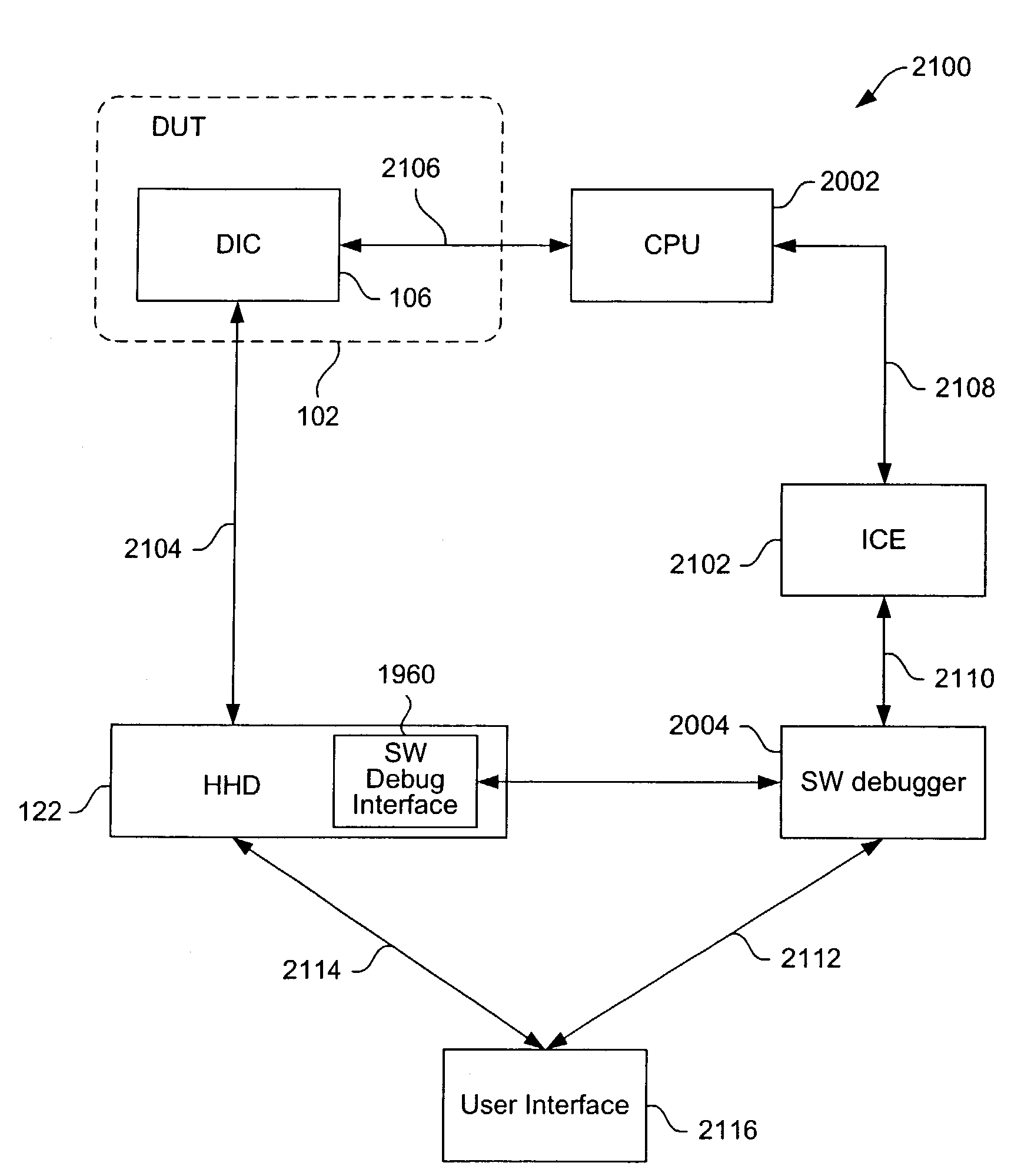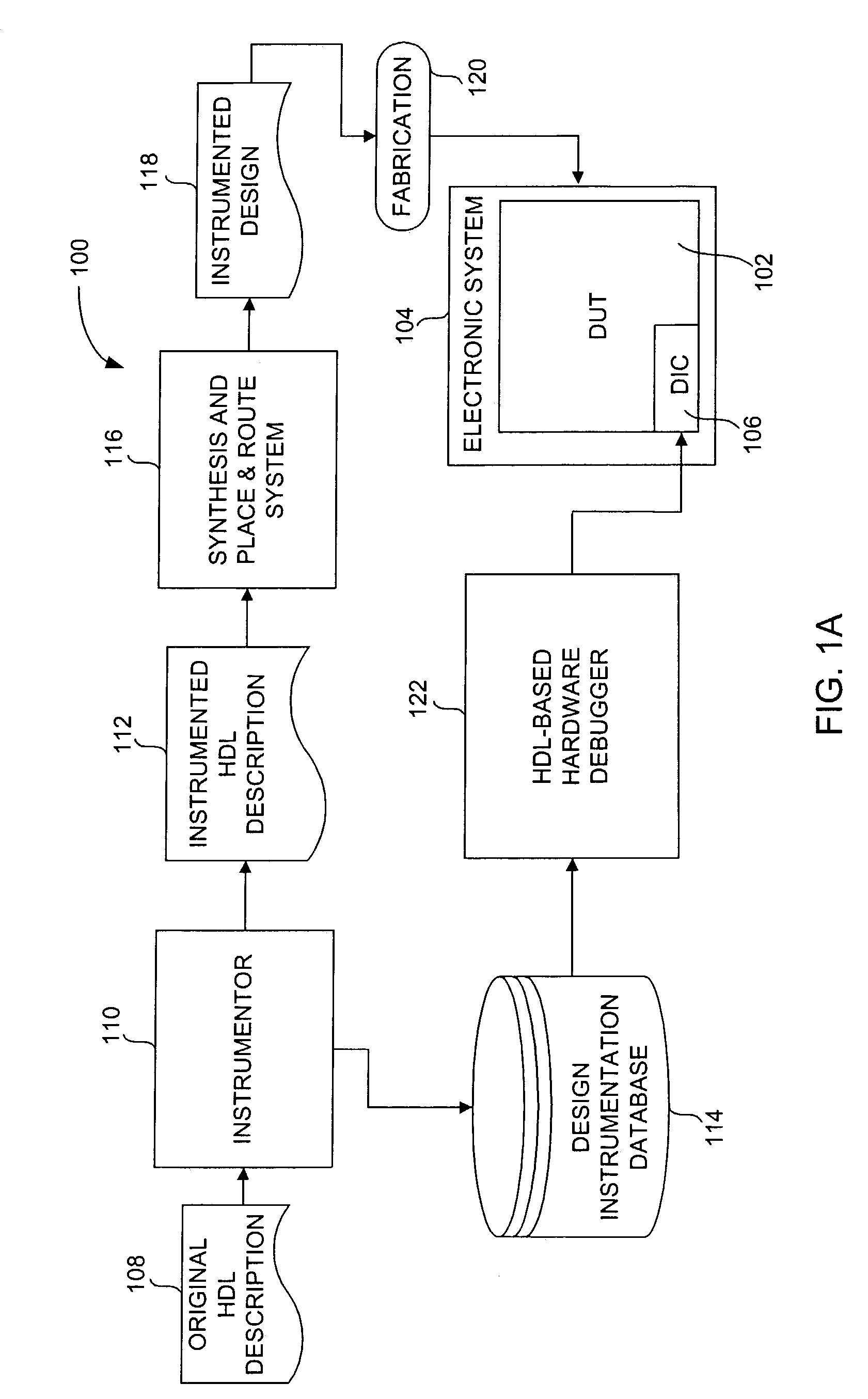Hardware/software co-debugging in a hardware description language
a hardware description and description language technology, applied in the field of electronic system debugging, can solve the problems of software debuggers also supporting limited concurrency, software debuggers may provide a limited capability, and the designer of the electronic system observes a functional failur
- Summary
- Abstract
- Description
- Claims
- Application Information
AI Technical Summary
Problems solved by technology
Method used
Image
Examples
Embodiment Construction
[0073]Embodiments of a hardware debugging system for debugging an electronic system are described, where the electronic system includes an electronic circuit design and at least one microprocessor executing a computer software program. In one embodiment, the hardware debugging system includes an instrumentor that receives a high level HDL (Hardware Description Language) description of the electronic circuit design, determines aspects of the electronic circuit design to be examined or modified during debugging, and determines design instrumentation circuitry (DIC) to be incorporated into the electronic circuit design to facilitate debugging. In one embodiment, the hardware debugging system also includes an HDL-based hardware debugger (HHD) that debugs the electronic system (fabricated in accordance with the high level HDL description) by interacting with the electronic circuit design using the additional design instrumentation circuitry and by presenting debug information with respec...
PUM
 Login to View More
Login to View More Abstract
Description
Claims
Application Information
 Login to View More
Login to View More - R&D
- Intellectual Property
- Life Sciences
- Materials
- Tech Scout
- Unparalleled Data Quality
- Higher Quality Content
- 60% Fewer Hallucinations
Browse by: Latest US Patents, China's latest patents, Technical Efficacy Thesaurus, Application Domain, Technology Topic, Popular Technical Reports.
© 2025 PatSnap. All rights reserved.Legal|Privacy policy|Modern Slavery Act Transparency Statement|Sitemap|About US| Contact US: help@patsnap.com



